Greenhouse gardening allows gardeners to grow plants in a controlled environment and protect them from harsh weather conditions. Organic greenhouse growing techniques offer even more benefits as they promote sustainability, reduce environmental impact, and produce healthier crops.
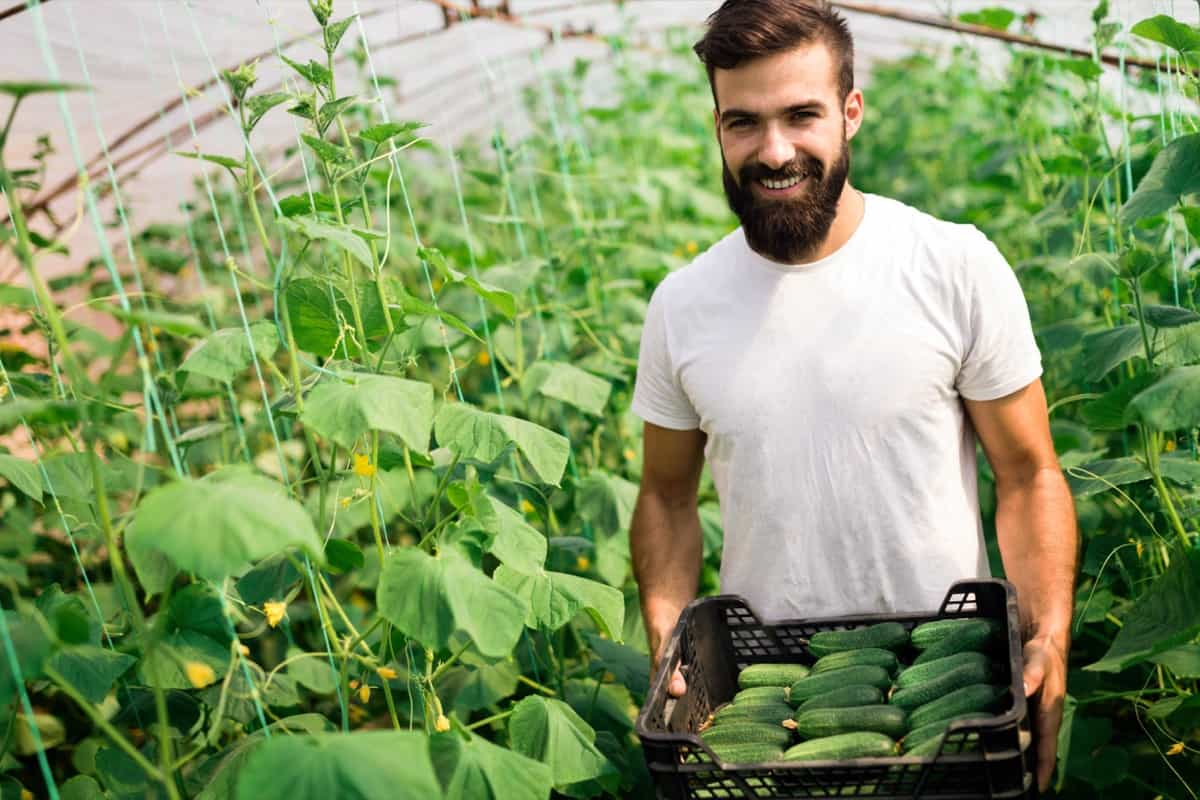
Remember that greenhouse gardening requires patience and attention to detail. You need to maintain consistent temperatures, humidity levels, and proper ventilation to provide ideal growing conditions for your plants. With some patience, you will soon begin reaping the benefits of organic greenhouse-growing techniques below.
Organic Greenhouse Growing Techniques
Step-by-step Organic Greenhouse Growing Guide
Organic greenhouse growing is a method of gardening that allows you to control the environment in which your plants grow. To get started, select the right location for your greenhouse and choose the type of plants you want to grow. Prepare your soil by adding organic matter such as compost or aged manure.
After preparing your soil, it’s time to plant. Start by sowing seeds or transplanting seedlings into pots filled with moistened potting mix. Once your plants have grown, you can transplant them into containers or directly into the ground inside the greenhouse. Remember to water them regularly and keep an eye on their growth progress.
To ensure optimal conditions for growth, consider installing ventilation systems to regulate temperature and humidity levels within the greenhouse. Additionally, controlling pests using natural methods like companion planting can help protect against damage from insects while avoiding harmful pesticides.
In case you missed it: Greenhouse Growing for Urban Areas: Unlocking the Potential of Urban Spaces

Effective Organic Greenhouse Growing Methods
Effective organic greenhouse growing methods are essential to ensure the successful growth of plants. Hydroponic systems can be easily set up in a greenhouse and offer a more controlled environment for plant growth. Another effective method is companion planting, where two or more crops that benefit each other are planted together.
Integrating beneficial insects into the greenhouse ecosystem is another effective method to control pests naturally. Ladybugs, praying mantises, and lacewings are some examples of beneficial insects that can help control pest populations in the greenhouse. Using reflective materials such as white paint on walls or installing reflective films on windows can also increase light reflection inside the greenhouse and enhance plant growth.
Regularly monitoring temperature and humidity levels within the greenhouse ensures optimal conditions for plant growth. Installing ventilation systems like fans or vents helps regulate airflow and prevent mold and disease from developing among your plants. Implementing these effective organic greenhouse growing methods will lead to healthier plants with higher yields while promoting sustainable agriculture practices.
Top Sustainable Practices for Greenhouse Growing
Greenhouse growing can be a sustainable way to produce fresh and healthy vegetables all year round. However, it is important to implement sustainable practices to reduce greenhouse operations’ environmental impact. Renewable energy sources, such as solar panels, are the most effective way to make your greenhouse more eco-friendly. Another key sustainability practice for greenhouse growers is water conservation.
Using natural pest control methods, like companion planting or releasing beneficial insects like ladybugs, can minimize the use of harmful chemicals that could harm both plants and human health. Crop rotation is another important strategy for maintaining soil fertility while preventing soil-borne diseases from spreading throughout your crops.
In case you missed it: Cleaning Tips for Your Greenhouse: Best Time to Clean and Common Mistakes
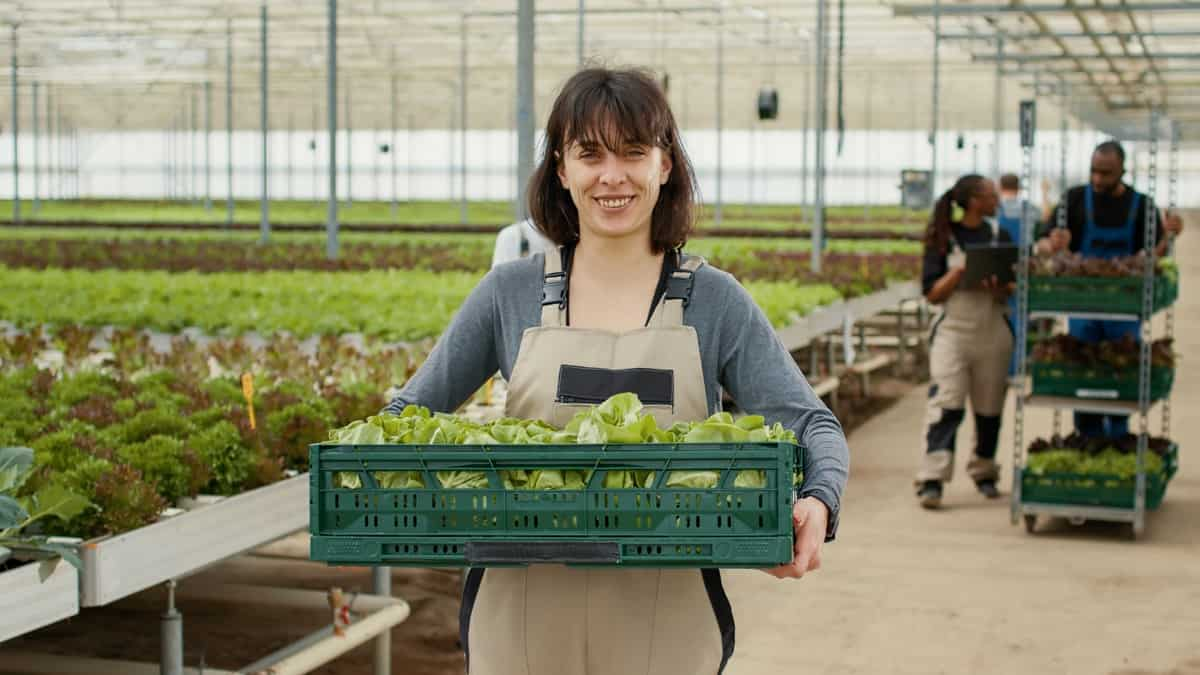
By rotating different plant families each season, you ensure that soil nutrients are replenished while pests and diseases do not accumulate over time. Ensuring that waste streams are minimized through composting unused plant material or recycling plastic containers used for seedlings ensures that resources are utilized efficiently within the growing process without undue burden on landfills or other disposal facilities.
Organic Pest Control Strategies for Greenhouse Growing
Greenhouse growers can use many organic pest control strategies to protect their crops without resorting to harmful chemicals. One effective method is using natural predators like ladybugs and praying mantises. These insects help keep aphids and other small pests at bay by eating them or laying eggs in their colonies. Another strategy is companion planting, where certain plants are grown alongside others to repel pests.
For example, marigolds release a scent that deters whiteflies and nematodes. Sticky traps are also useful in catching flying insects like thrips and fungus gnats. These glue-based traps can be hung from the greenhouse ceiling and capture any bugs flying into them. Also, homemade sprays from garlic or chili peppers are effective against common pests such as spider mites and aphids. Mix chopped garlic or peppers with water and spray it on the affected plants.
Maximizing Yields in Organic Greenhouse Growing
One of the key benefits of growing plants in a greenhouse is that it allows for greater control over environmental conditions, which can lead to higher yields. Pay close attention to lighting and temperature. Different types of plants have various lighting requirements, so be sure to research what your specific crops need and adjust accordingly. Temperature also plays a crucial role; maintain consistent temperatures throughout the day and night.
Proper ventilation is essential for healthy plant growth. This helps regulate temperature and humidity levels while preventing the buildup of harmful gases like carbon dioxide.
Overwatering or under watering can both negatively affect yield potential. Look into organic fertilizers to provide necessary nutrients without harming soil health. Consider companion planting to increase yields by promoting natural pest control mechanisms while encouraging pollination amongst compatible species.
Seasonal Crop Rotation in Organic Greenhouse Growing
Seasonal crop rotation is vital in organic greenhouse growing that helps ensure your plants’ long-term health and productivity. This method involves switching up the types of crops grown in each bed or section of the greenhouse every season, which can help prevent soil depletion and reduce pest problems. To begin implementing seasonal crop rotation, it’s important to divide your greenhouse into different sections or beds. Move crops around each season so that plants from the same family are not planted in the same area twice a row.
In case you missed it: 12 Common Greenhouse Gardening Problems and Solutions: A Beginners Guide
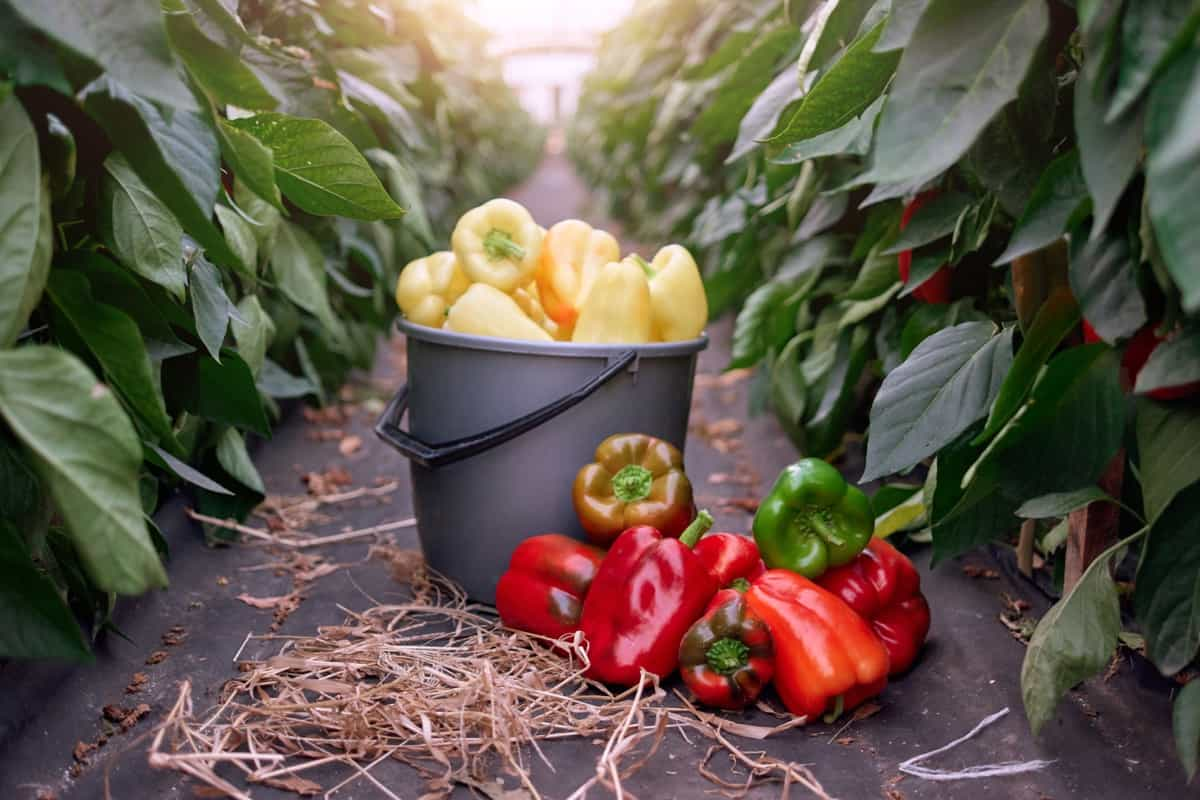
By rotating crops regularly, you can avoid depleting specific nutrients from your soil while also preventing certain pests and diseases from taking hold. Additionally, this technique can help improve overall soil structure over time by encouraging diverse microbial populations.
If possible, try to plan out several years’ worth of crop rotations ahead of time to optimize yield and minimize any negative impacts on soil health.
Managing Soil Health in Organic Greenhouse Growing
Managing soil health is key to producing healthy and vibrant plants in organic greenhouse gardening. It’s important to test your soil pH levels and amend them accordingly regularly. Most plants thrive in a slightly acidic environment with a pH between 6 and 7. Crop rotation can help prevent nutrient depletion and reduce the risk of disease buildup in the soil. By rotating crops every few seasons, you allow time for natural processes like decomposition to replenish nutrients.
Cover crops during rest periods can also benefit your greenhouse soils by providing additional organic matter while suppressing weeds that might otherwise compete with your plants for vital nutrients. Incorporating beneficial microbes into the soil through compost tea can improve overall plant health by promoting stronger root growth and better nutrient uptake. Maintaining good quality soils will help ensure successful crop yields year after year.
Water Conservation Techniques for Organic Greenhouse Growing
Water conservation is an important consideration when it comes to greenhouse growth. You can reduce water usage with the right techniques while maintaining healthy and productive plants. A drip irrigation system is an effective way to conserve water in your greenhouse. Another technique for conserving water is mulching. You may also consider collecting rainwater to use for watering your greenhouse plants.
In addition, it’s important to monitor your plant’s hydration needs carefully. Over-watering wastes resources and can lead to root rot or other issues. Techniques like soil moisture sensors or observing plant behavior can help ensure you provide enough water without going overboard. Adopting practices that prioritize sustainability and resource management is important when it comes to successful organic greenhouse growth while protecting our environment at the same time.
Natural Fertilization Methods for Greenhouse Growing
Organic greenhouse growth relies heavily on natural fertilizers to promote plant growth and maximize yields. Unlike chemical fertilizers that can harm soil fertility over time, natural fertilization methods help maintain a healthy and balanced ecosystem within the greenhouse. Composting is one popular method of natural fertilizer production.
By combining organic waste such as leaves, grass clippings, food scraps, and manure in a compost bin or pile, gardeners can produce nutrient-rich compost for their plants. The resulting compost provides essential nutrients like nitrogen, phosphorous, and potassium while improving soil texture. Another effective method of natural fertilization for greenhouse growing is using cover crops between planting seasons.
In case you missed it: How to Make a Greenhouse on Terrace: Mini/Small Greenhouse Ideas, and Tips
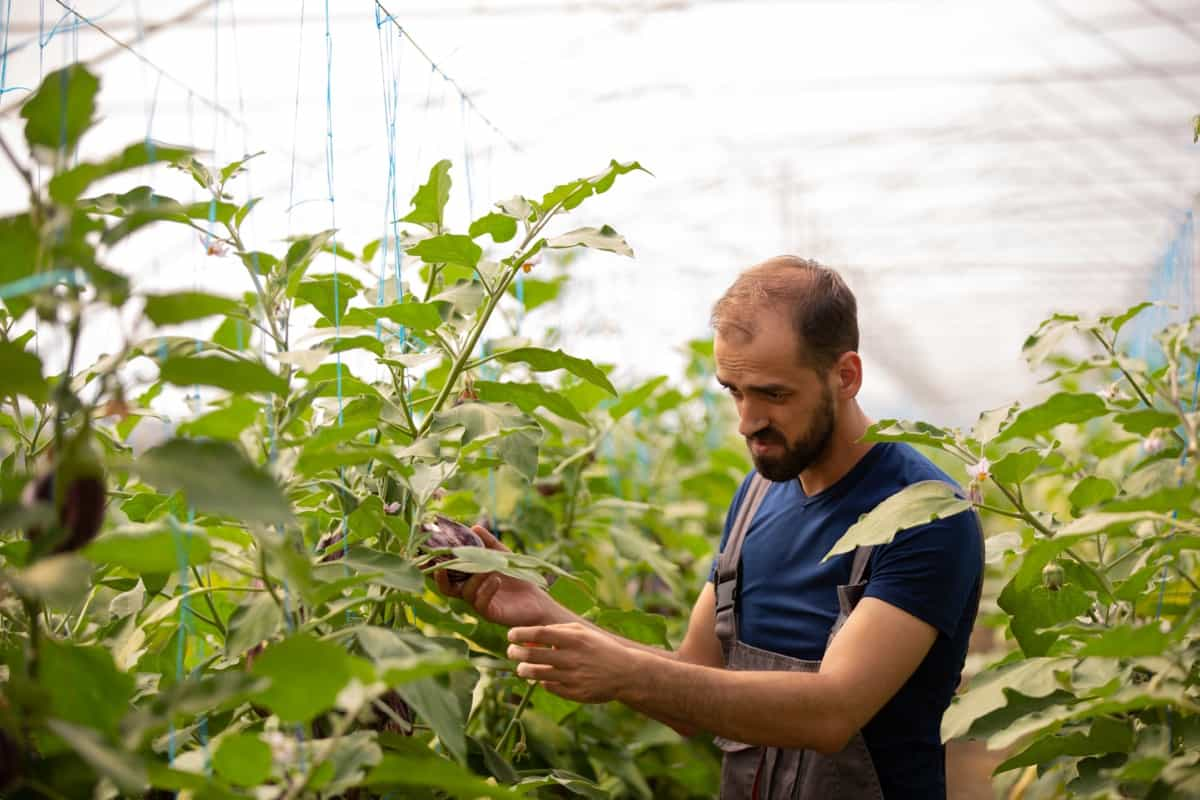
Crop rotation is another way to naturally enrich soil fertility over time by alternating crop types each season to prevent the depletion of specific nutrients in the soil. Incorporating these natural fertilization methods into your organic greenhouse growing routine will lead to healthier plant growth without compromising long-term sustainability efforts.
Weed Management in Organic Greenhouse Growing
Weeds can quickly take over and compete with your crops for nutrients, water, and light. Therefore, it is crucial to have a weed management plan in place. One way to manage weeds in an organic greenhouse is through manual removal. This involves physically pulling out the weeds by hand or using a hoe or cultivator to uproot them. While this method may be time-consuming, it effectively controls the spread of weeds.
Another approach to weed management is mulching. Mulching involves covering the soil with straw or wood chips to suppress weed growth while retaining moisture and improving soil health. Crop rotation can also aid in managing weeds since different plant varieties require varying nutrient levels from the soil.
Ttherefore, specific types of weeds that thrive on certain nutrient combinations are starved out when crop rotation occurs regularly. Last but not least, cover cropping helps control weed growth by planting hardy species between rows so that they compete better against invading pests while maintaining fertility levels within soils naturally without having chemicals added to them.
Preventing Diseases in Organic Greenhouse Growing
Preventing diseases in organic greenhouse growth is crucial in maintaining healthy and productive plants. Prevention starts with proper sanitation practices, such as regularly cleaning surfaces and tools to prevent the spread of pathogens. It’s also important to avoid overwatering and ensure good ventilation to minimize moisture buildup, which can create ideal conditions for disease development.
Another effective method of preventing diseases is crop rotation. By rotating crops from different families, you can reduce the risk of soil-borne diseases that target specific plant families. Additionally, selecting disease-resistant varieties can help protect your plants from potential threats. Incorporating beneficial insects or using biological control methods like nematodes and fungi can prevent disease outbreaks by keeping harmful pests at bay.
Sustainable Energy Solutions for Greenhouse Growing
Greenhouse growing can be energy-intensive, as it requires a lot of power to control the temperature inside the structure. However, greenhouse growers can adopt several sustainable energy solutions to reduce their carbon footprint and save on energy costs. Install solar panels on or near the greenhouse. This saves money on electricity bills and reduces greenhouse gas emissions. Another solution is geothermal heating and cooling systems.
These use underground pipes to transfer heat between the earth’s surface and the air inside the greenhouse. Geothermal systems are highly efficient because they rely on stable ground temperatures rather than fluctuating outdoor temperatures. Wind turbines are another option for generating clean energy for greenhouses located in windy areas. They produce electricity by harnessing wind power, which can then be used to operate various equipment within a greenhouse.
Organic Greenhouse Growing Tips and Tricks
Organic greenhouse growing can be a challenging yet rewarding experience for any gardener.
Certain plants have natural insect-repelling properties, while others attract beneficial insects. Greenhouses can get hot quickly, especially during the summer months. Keep an eye on your greenhouse’s temperature and humidity levels.
In case you missed it: Top 30 Vegetables To Grow In A Greenhouse
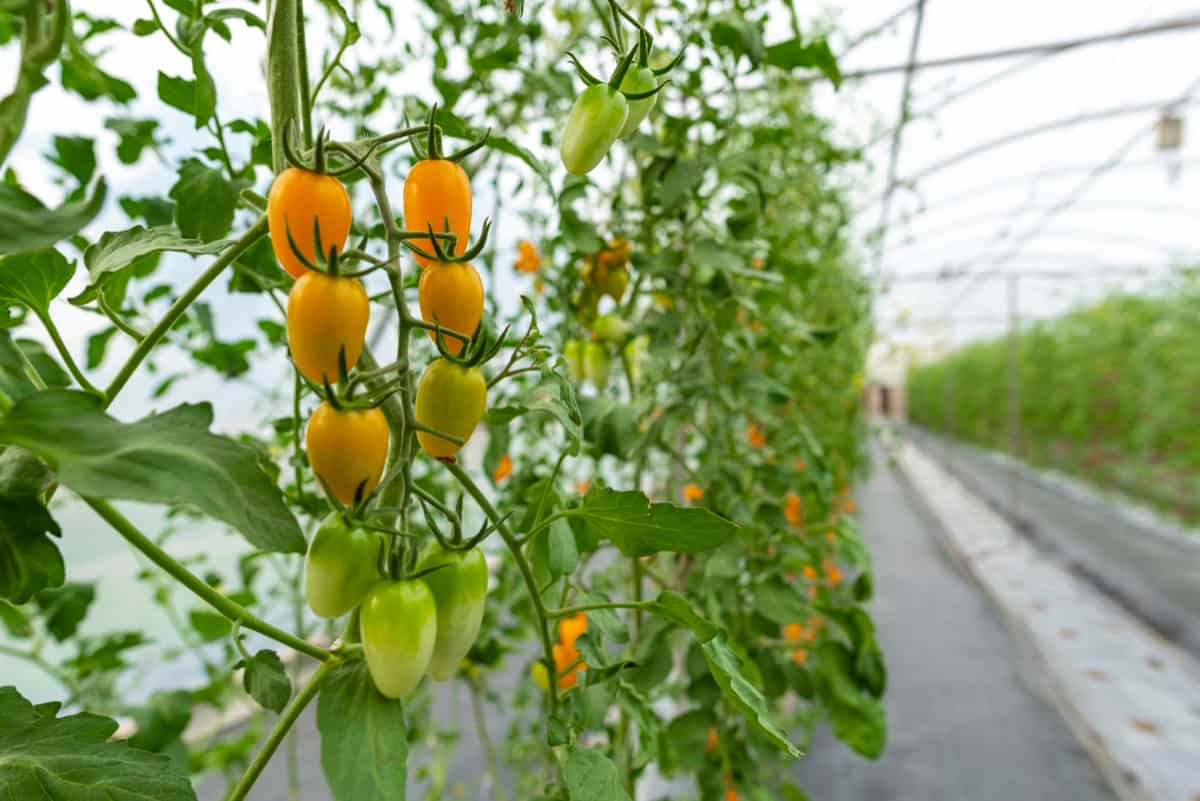
Regular pruning of your plants promotes healthier growth and helps prevent the disease from spreading throughout your greenhouse. Watering in the morning allows for maximum absorption by the plants before the day’s heat evaporates it all away. Crop rotation is important to maintain soil health and prevent pests and diseases. Avoid synthetic fertilizers that may harm beneficial microbes in your soil or potentially leach into groundwater sources nearby.
Conclusion
Organic greenhouse growing techniques are a sustainable and eco-friendly way to grow plants all year round. Unlike traditional outdoor gardening, greenhouses provide a controlled environment in which you can adjust temperature, humidity, and lighting to suit the needs of your plants. To start with organic greenhouse growth, it’s important to understand the basics of plant biology. Different crops require different conditions for optimal growth – some need high temperatures, while others prefer cooler climates.
By researching the specific requirements of each crop you plan to cultivate, you can create an ideal environment within your greenhouse. Organic greenhouse-growing techniques offer a sustainable way to produce healthy crops without relying on harmful chemicals or excessive resources. By understanding the needs of your plants and applying best practices for managing your greenhouse environment, you can unleash their full potential under glass.
- Gongura Seed Germination and Planting Methods
- Cabbage Seed Germination and Selection
- Broccoli Seed Germination and Selection
- Asparagus Seed Germination and Variety Selection
- Seasonal Flower Gardening: Best Practices for Spring, Summer, Fall, and Winter
- How to Grow Hibiscus from Flower
- Plantation Ideas for Home Decoration: A Beginners Guide
- Flower Garden Designs and Layouts for Beginners
- Planting and Spacing Techniques in Papaya: A Beginner’s Guide
- Growing Gold: Essential Techniques for Planting Pineapples
- How to Make Kalanchoe Plant Bushy: Home Remedies and Solutions
- 11 Reasons Why Your Gardenia is Not Blooming: Home Remedies and Solutions
- Eco Elegance: The Guide to Designing a Drought-Tolerant Landscape
- Gardening on a Slope: Strategies for Hillside Landscaping
- Nourish and Flourish: Top Organic Mulches for Thriving House Plants
- Everything You Want to Know about Indian Mogra Flower: Discover Uses and Growing
- Green Thumb Success: Expert Tips for Cultivating Greenhouse Pumpkins All Year Round
- Maximize Growth & Flavor: The Ultimate Guide to Companion Planting in Herb Gardens
- How to Control Rhododendron Problems Naturally: Home Remedies and Organic Ways to Fix Them
- Natural Magic: The Remarkable Benefits of Cinnamon for Plants
- Best Steps to Revive Dying Tulip with Natural and Organic Treatment
- 10 Reasons Why Your Angel Trumpet is Not Blooming: Remedies and Treatment
- How to Fix Periwinkle Leaf and Flower-Related Problems: Natural Remedies and Solutions
- How to Fix Zinnias Leaf and Flower Problems: Discover Natural and Home Remedies
- Organic Steps to Induce Lemon Tree Flowers: A Comprehensive Guide
- Bloom Booster: Crafting the Perfect Homemade Bougainvillea Fertilizer
- Optimizing Growth: A Guide to Applying NPK Fertilizer for Potted Plants
- 10 Best Homemade Fertilizers for Rubber Plant: DIY Recipes and Application Method
- How to Boost Female Pumpkin Flowers: Effective Steps for More Flowers and High Yields
- Transform Your Indoor Garden: Top Benefits of Pink Salt for Houseplants
- 10 Best Homemade Fertilizers for Peacock Plants (Calathea): Easy DIY Guide
- Unlock Blooms: 9 Reasons Why Your Potted Chrysanthemum is Not Blooming
- 8 Reasons Why Your Potted Hibiscus is Not Blooming: Fix it with Simple Solutions
- Unlock Blooms: 9 Key Reasons Your Potted Frangipani Won’t Flower
- 10 Reasons Why Is My Ice Plant Not Blooming: Remedies and Treatment
- 10 Reasons Why My Potted Hydrangea Not Blooming: Treatment and Remedies